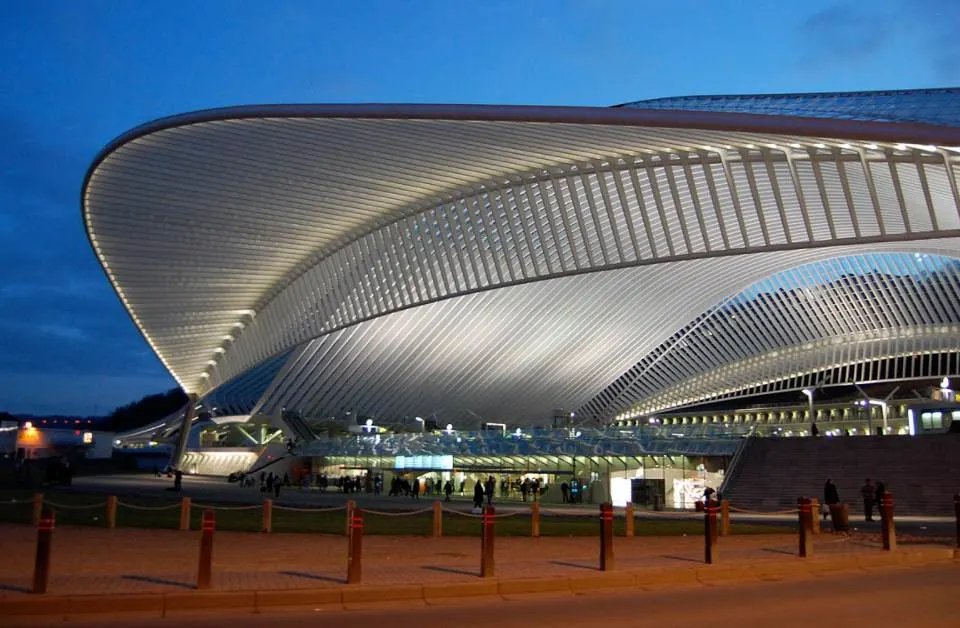If you want to admire the modern architecture of one of the most amazing train stations in the world, then you have to head over to the Belgian city of Liège.
Here you can find an incredible structure designed by one of the most renowned architects of our time.
Let’s take a closer look at some of the most interesting facts about the Liège-Guillemins railway station so you can learn all about the history of this wonderfully designed landmark in Liège.
1. It’s located in the heart of the 3rd-largest city in Belgium
Liège-Guillemins is the name of the main train station in Liège, the third-largest metropolitan area in Belgium after Brussels and Antwerp. While the city proper only has a population of around 200,000 inhabitants, over 750,000 people live in the urbanized area around it.
The city is situated in the valley of the Meuse River, a major river with a length of 925 kilometers (575 miles). It flows through France, Belgium, and the Netherlands, and eventually releases into the North Sea.
Guillemins is the name of a neighborhood located in the central part of Liège. The highest and arguably most amazing skyscraper in the Wallonia region of Belgium is located just east of the train station, and a fine arts museum named “La Boverie” is located just a bit further.

2. The first train station on this location opened in 1842
The first train ride in mainland Europe took place on May 5, 1835. The train covered 22 kilometers (13.67 miles) between the two Belgian cities of Brussels and Mechelen.
This special event makes Belgium a pioneering country in the development of railway transport in Europe, resulting in the extensive railway network in the country today.
The first line to connect Brussels with the region of Liège was completed in 1838, connecting the Belgian capital and Ans, a suburb in the Western part of the city. The original train station of Liège-Guillemins opened its doors in May 1842.
3. The first station was completely modernized for a famous event in 1905

To say that the Belgian railway network grew fast is an understatement. It wasn’t long before passengers could travel between just about any city in Belgium to train stations abroad as well.
The first connection between Liège and the German cities of Aachen and Cologne was opened in 1843, resulting in the exponential growth of the number of yearly visitors that passed through Liège-Guillemins.
The humble first station was expanded in the year 1882 and completely rebuilt in 1905. It was designed in the Beaux-Arts style that was popular in the early 20th century.
The main reason why the building was given a facelift was the “Exposition Universelle et Internationale de Liège,” a World Fair that took place in Liège in the year 1905. This marked the 75th year of Belgium’s independence and the 40th year of King Leopold II’s reign.
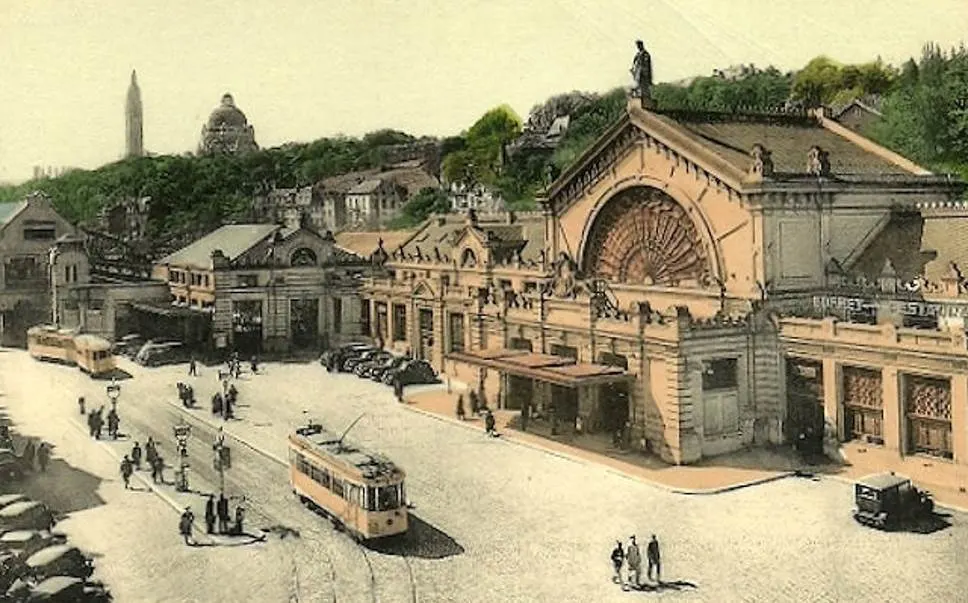
4. The Beaux-Arts building was replaced by a rather ugly one in 1958
A strange decision was made in the 1950s because the rather beautiful Beaux-Arts building was replaced by a heavily criticized modern building designed in the International Style.
This style can be described as one of the predecessors of modern architecture that developed in the 1920s and 1930s. It’s also sometimes referred to as rationalist architecture or the modern movement.
It’s fair to conclude that this building was rightfully criticized because it was indeed rather ugly. This version of the train station was in use until it was completely demolished in the year 2009 to make way for the amazing Liège-Guillemins railway station we can see today.
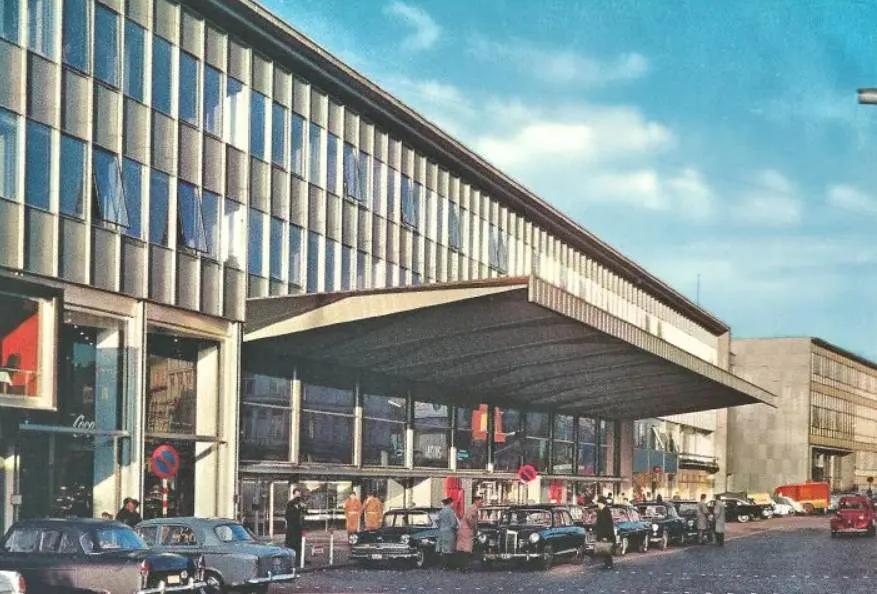
5. The modern Liège-Guillemins railway station had a renowned architect
The plans to replace the criticized building with a modern structure came about at the turn of the 21st-century. Spanish architect Santiago Calatrava was hired to design a modern building that was to become one of the most amazing train stations in Europe.
Calatrava has designed famous structures all around the world, including the revolutionary Turning Torso in Malmö, Sweden, and the WTC Hub in New York City. The latter cost an astounding $4 billion to complete in 2016.
His modern designs are unique, something that is also reflected in his design of the train station in Liège. He also left a permanent mark on his home city of Valencia in Spain with the stunning opera house called the Palau de les Arts Reina Sofía and the monumental City of Arts and Science.
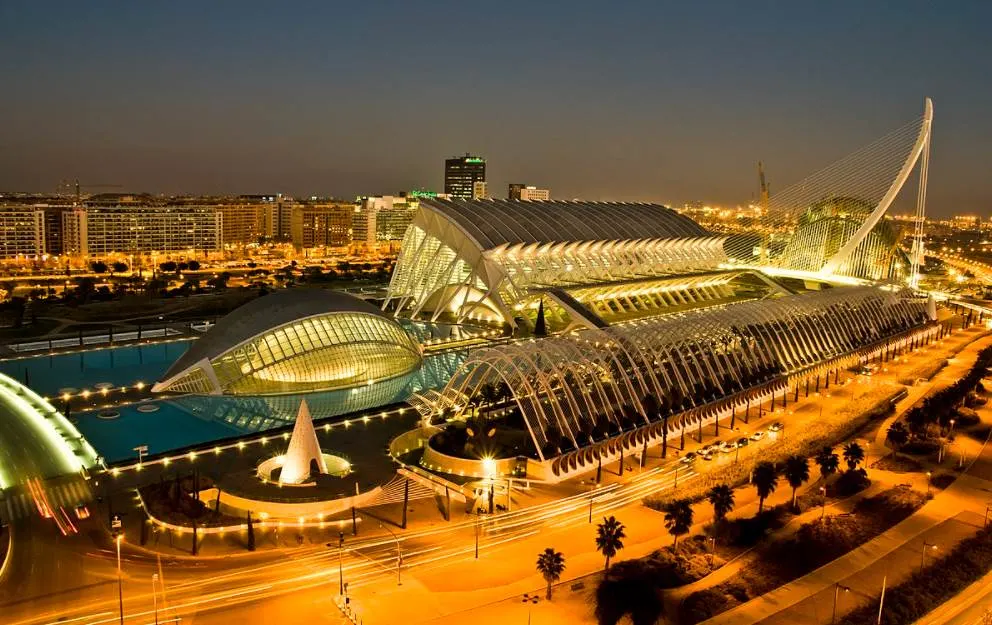
6. The main feature of the building is a monumental arch
The interior of the building gives the feeling of vast space and that’s mainly because of its most amazing feat of nature, a monumental arch.
The vaulted roof of the building consists of steel, glass panels, and white concrete, and the arch of the building has a length of 160 meters (524 feet) and a maximum height of 32 meters (104 feet).
Some buildings at the City of Arts and Science look rather familiar, don’t you think?
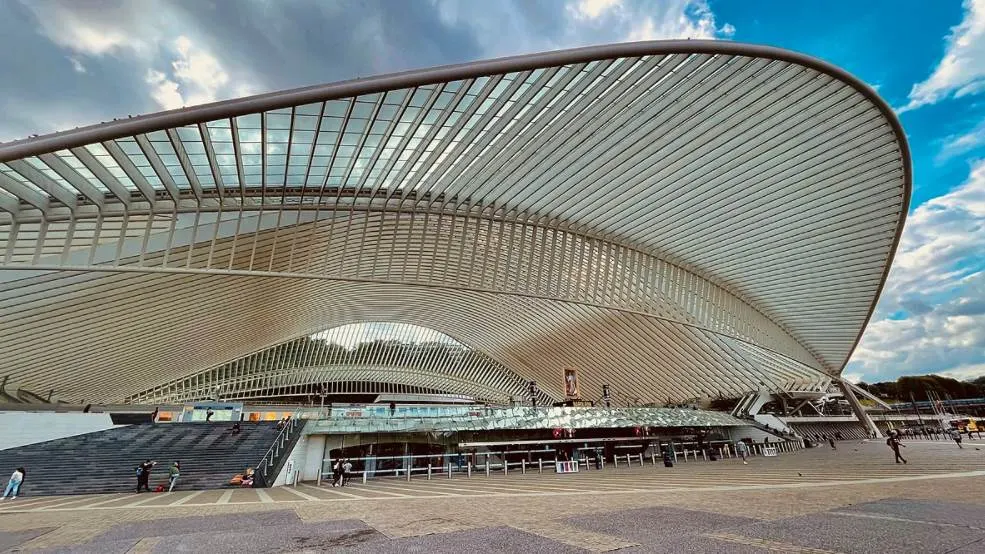
7. The expensive building was opened to passengers in September 2009
The train station features 5 platforms and has a total of 10 tracks. 3 of these platforms have a length of 450 meters (1,476 feet) and 2 have a length of 350 meters (1,148 feet).
The structure was completed in 2009 and opened to passengers on September 18, 2009, an event that was accompanied by a theater performance directed by Franco Dragone, a theater director who became world-famous for his work with Cirque du Soleil and Celine Dion.
The price tag of the building was hefty as well as the Liège-Guillemins railway station cost a whopping €312 million to complete.
8. It’s one of only four stations in Belgium to serve high-speed trains
The train station is an international transit hub that not only connects to all major cities in Belgium but also offers direct lines to multiple cities abroad. That’s because it’s one of just 4 train stations in Belgium to serve high-speed trains.
From the main train station in Liège, you can directly travel to Aachen, Lille, Maastricht, Paris, Aachen, Cologne, and Frankfurt.
Because of the limited number of tracks, it’s far from the busiest train station in Belgium with approximately 15,000 daily passengers. It occupies 11th place in the country and 3rd place in Wallonia in terms of the number of daily passengers.
